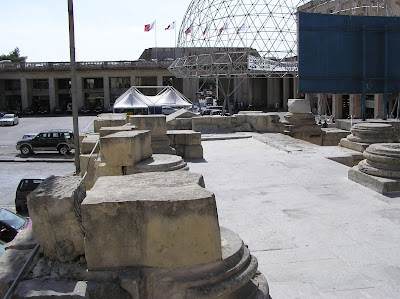Here's an example of destruction of a cultural artefact during war. Obviously human life is always a greater loss that that of an inanimate object, but the impact of the destruction of cultural symbols is a known psychological technique.
This is The Royal Opera House, Valetta, Malta. It is one of the few opera houses I've been in. As the Luftwaffe destroyed it in April 1942 it didn't actually count as an opera house at the time of my visit.
The Luftwaffe attempted to starve and bomb Malta in to submission. The island was one of the most intensively bombed areas during the entire war. Malta was primarily bombed due to the strategic importance the island had rather than for reasons of infrastructure. There were 1581 civilian casualties on the island during the course of the Second World War.
Here the inside of the opera house is being used as a car park, prior to being reborn as an open-air theatre.
The only other opera house I've visited was La Scala, Milan, which was a fully functional building, apart from the brass screw that fell out of a door handle on the Royal Box when we went in.
If they want the screw back...
Here's a view along the inside of the frontage of the opera house.
And this is a view of the opera house when it was still intact. A fine looking building.
The opera house had been around for only about 75 years when it was destroyed, and the Maltese seem fairly sanguine about the loss. The loss of artefacts thousands of years old might be handled in a less relaxed manner.
For official/internal use only:
7574
7574
0-9





No comments:
Post a Comment